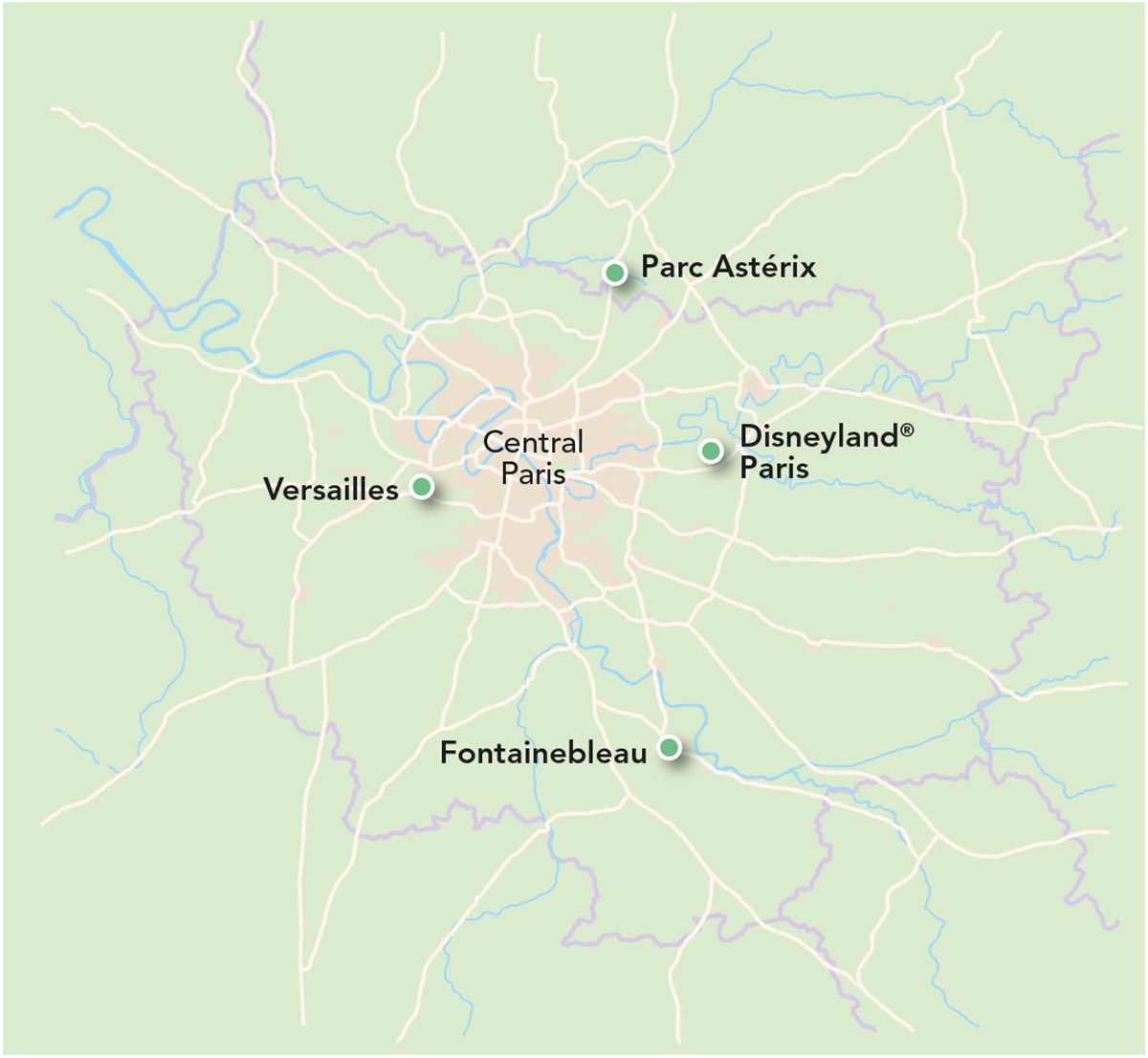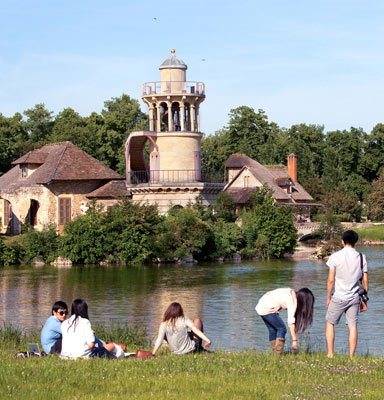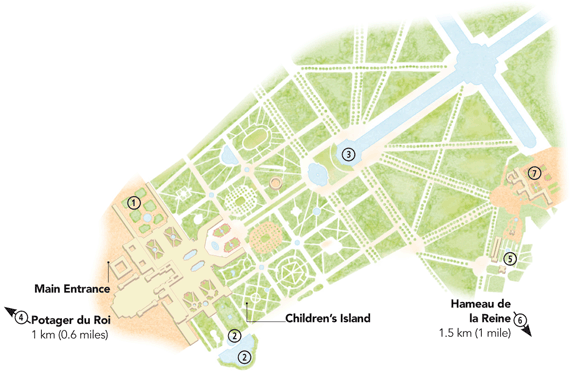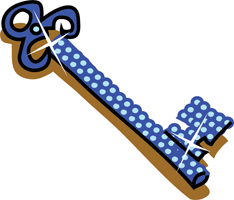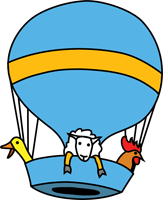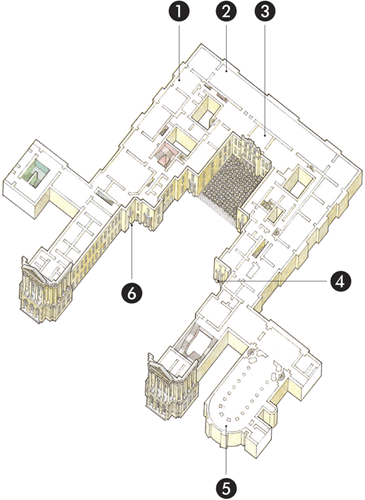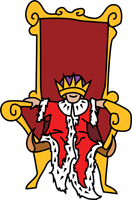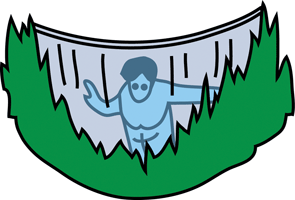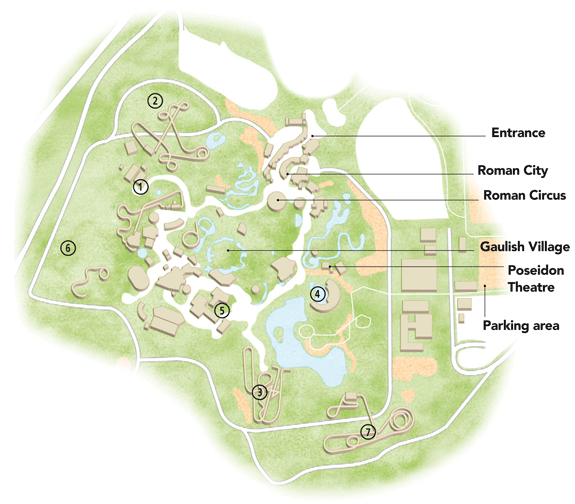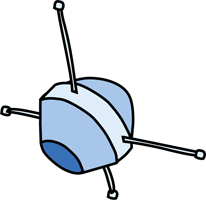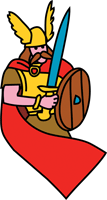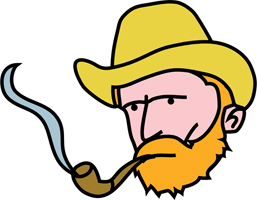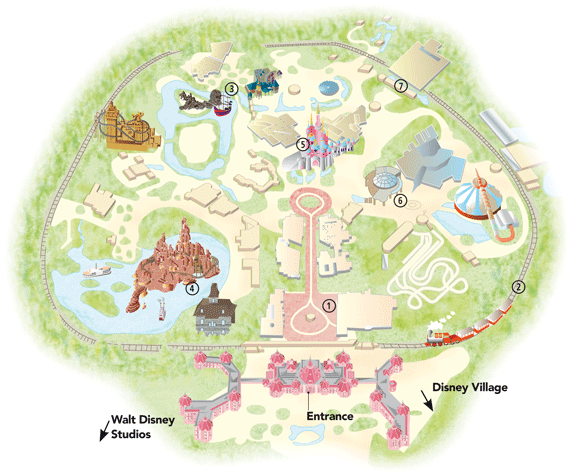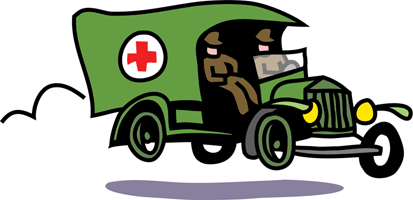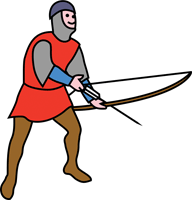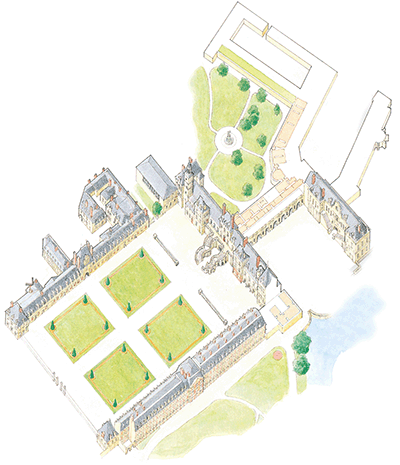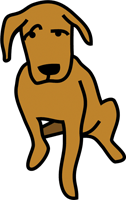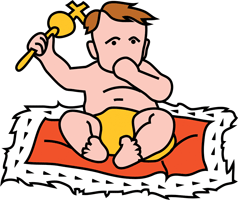< Day Trips
Day Trips from Paris

Astérix and his arch-enemies, the Romans, at Parc Astérix
The urban motorway ring road, the Périphérique, divides central Paris from its suburbs like a modern city wall. Beyond the suburbs and the outer, encircling A86, the Ile-de-France has many beautiful rural areas. Some of the best countryside runs in an arch from Provins in the east to Rambouillet in the west, and is dotted with great sights, be they cultural, educational, recreational or just plain fun. They are all perfect for day trips, whether visited on organized guided tours from Paris or independently by public transport or car.
1. Château de Versailles
Château de Versailles Palace
2. Rambouillet
3. Le Parc Zoologique de Thoiry
4. France Miniature
5. Parc Astérix
6. Auvers-sur-Oise
7. Abbaye de Royaumont
8. Musée de l’Air et de l’Espace
9. Disneyland® Paris
10. Provins
11. Vaux-le-Vicomte
12. Château de Blandy-les-Tours
13. Fontainebleau
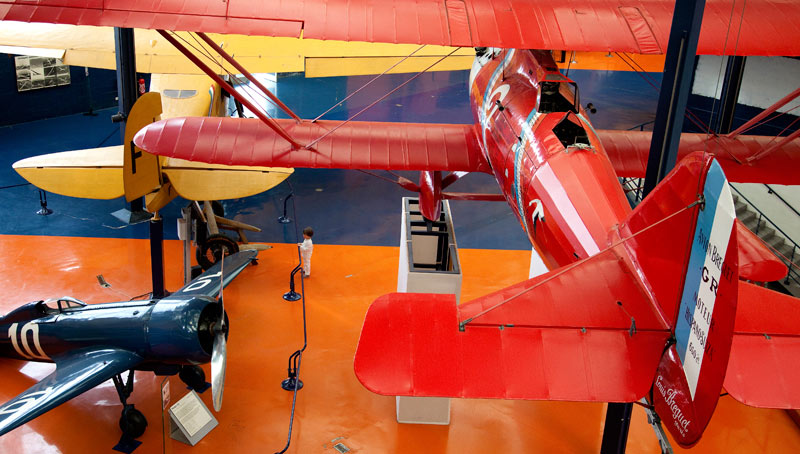
Aircraft on display at the Musée de l’Air et de l’Espace
1. Château de Versailles
Playground of a Sun King and a shepherdess queen
A stunning palace with fabulous gardens, Versailles is a great place for a day trip, or even a weekend, as there is so much to see and do. All that stood here before 1661 was an old royal hunting lodge, but Louis XIV converted it into Europe’s largest palace (see
Château de Versailles). The gardens were just as important to him, and his gardener, André Le Nôtre, spent 40 years flattening hills and draining marshes to make them perfect. Truly special, they are full of fountains and home to two smaller palaces, the Grand and Petit Trianons.
Key Features of the Gardens
1. Orangerie Louis XIV loved oranges, which were a delicacy, and built this huge garden so he could grow his own.
2. Fountains Ranging from bombastic multi-tiered creations to calm mirrors, fountains abound here. Find the one with a writhing dragon, or where the sun god Apollo is having a bath.
3. Grand Canal Louis XIV held extravagant boating parties here. He also kept gondolas, a gift from the Republic of Venice, at the head of the canal in a building known as “Little Venice”.
4. Potager du Roi Louis XIV loved food, especially melons, figs, peas and asparagus. The king’s vegetable garden, Potager du Roi, outside the main gardens, in front and to the left of the entrance to the palace, is a fun place to explore with kids in the summer and autumn months.
5. Petit Trianon This small château was given to Marie Antoinette by her husband, Louis XVI when she was 18 years old. It is a magical palace in miniature.
6. Hameau de la Reine About 1.5 km (1 mile) from the main palace is a thatched village, the Hameau de La Reine. This was Marie Antionette’s dream world, with a ballroom disguised as a barn and a large billiard room.
7. Grand Trianon On summer evenings, Louis XIV would hold parties at this small palace. Only the ladies of the court were invited.

Left Orangerie Middle Fountains
Right Grand Canal
Kids’ Corner
Look out for…
-
Apollo. Why are statues and paintings of the Greek Sun God all over the palace?
-
Statues representing the rivers of France around the Water Parterre. Can you name three of them?
-
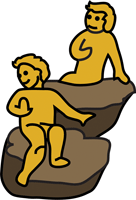
Golden babies are on the Children’s Island on the north side of the garden. How many are there?
Where’s the Queen?
Marie Antoinette spent too much time hiding away at the Petit Trianon. It set tongues wagging, alienated the court and added to her reputation for being an airhead. She alone held the key to the palace, which was decorated with 531 diamonds.
A frivolous queen
While Marie Antoinette tied blue bows around the necks of her sheep, French peasants starved to death – the eruption of a volcano in Iceland led to poor harvests, which were followed by bitterly cold winters.
Flying sheep
Plenty of scientific discoveries were made at Versailles. Louis XIV brought the best scientific minds to the palance and founded an Académie des Sciences here in 1666. He also had a rhinoceros brought all the way from India to put in his personal zoo. There was an electricity demonstration in the Hall of Mirrors and in 1783 the first hot-air balloon took to the air. The passengers were a rooster, a duck and a sheep called Mont au Ciel, or “Up to the Sky.”
Château de Versailles Palace
2,300 rooms, 67 staircases and 1,944 windows
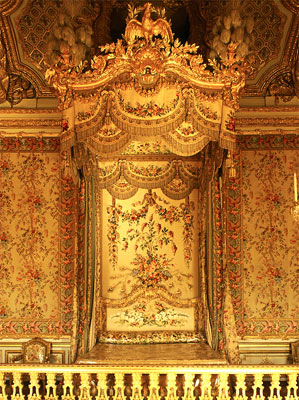
Queen’s bedroom
After Louis XIV moved into his splendid new palace, he made most French aristocrats come and spend time at his court. Around 3,000 people lived in the palace at any one time, often in cold and dingy apartments, but near the centre of power and favours. It symbolized all that was wrong with the Ancien Régime and only just escaped being destroyed in the Revolution. Head for the Hall of Mirrors, passing through the first floor rooms, and then head for the park.
Key Features of the Palace
1. Queen’s Bedroom Courtiers crowded around in this room to watch the birth of royal children and make sure that the new heir was actually the Queen’s child.
2. Hall of Mirrors The treaty that ended World War I was signed in this sparkling hall in June 1919.
3. King’s Bedroom This room was strategically located on the axis of the sun’s journey across the sky, affirming that Louis XIV was at the centre of the world.
5. Chapelle Royale Louis XIV attended mass here every morning. The first floor was reserved for the royal family and the ground floor for the court.
• Place d’Armes Louis XIV reviewed his troops in this square in front of the château. A warrior king, he had a large army and fought numerous battles.

Left King’s Bedroom Middle Chapelle Royale Right Place d’Armes
Kids’ Corner
Look out for…
-
The false door in the queen’s bedroom. Marie Antoinette escaped the revolutionary mob by fleeing through it into the king’s room on 6 October 1789.
-
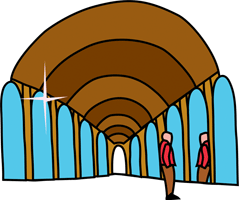
Mirrors. Can you guess how many there are in the Hall of Mirrors?
-
The blue and gold clock overlooking the royal courtyard with a sun in the middle. Louix XIV was known as the Sun King.
The king has to lie down
When Louis XV became king he was just five years old. He loved to lie on the floor of the Hall of Mirrors and demanded that his ministers did so too.
What’s that smell?
Versailles was famous for its foul smells. There were only nine toilets and chamber pots were frequently emptied out of the window into the garden!
Good morning, your majesty
Everything the king did was an important event – even getting out of bed. He was woken up every morning at 8 o’clock and given a medical check by his doctor. While he washed, his closest friends and family took the opportunity to ask favours. He even dressed in front of a huge audience of several hundred people.
2. Rambouillet
Lambs, trains and trees
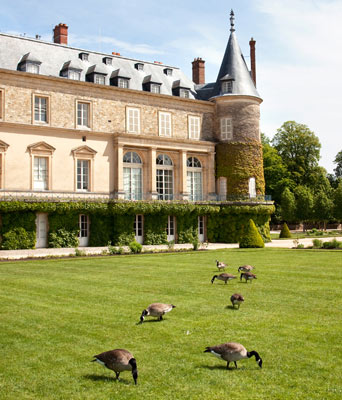
Geese on the lush lawns of the Château de Rambouillet
Rambouillet is a lovely, classic French town, situated on the edge of the Forêt de Rambouillet, an enchanting forest full of birds of prey, deer and wild boar. It is dominated by the Château de Rambouillet, the official summer residence of the French President, which has fairytale towers and the Queen’s Dairy, where Marie Antoinette used to play at being a milkmaid. Napoleon spent his last night in France here on 30 June 1815.
For kids, the highlight of the trip is bottle-feeding the lambs during lambing season at the Bergerie Nationale, the national sheep farm, founded in 1784. Don’t miss the Musée Rambolitrain, which has 4,000 miniature train models.
Kids’ Corner
Find Out More…
1. How do elephants talk to each other?
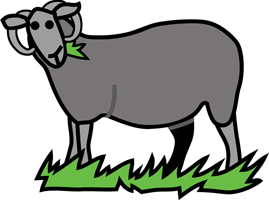
2. What is special about the sheep at Rambouillet?
3. Le Parc Zoologique de Thoiry
Animal magic
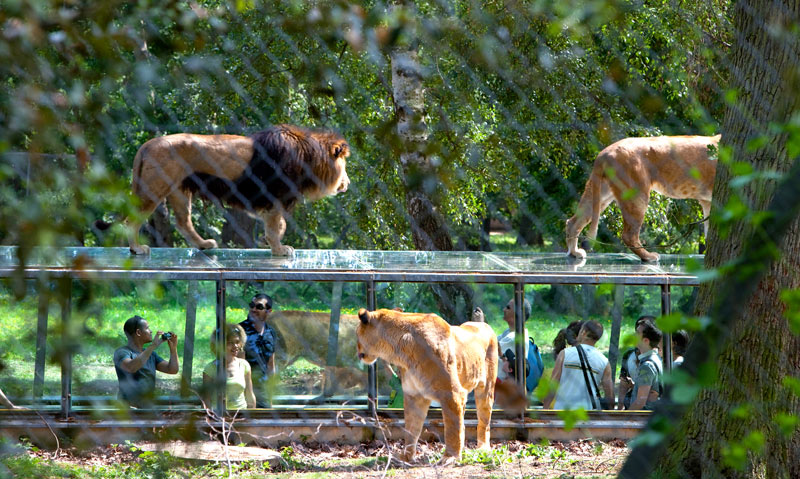
Lions being fed at Le Parc Zoologique de Thoiry
Kids will love the drive through this safari park, one of Europe’s finest, full of elephants, giraffes, hippos and bears. There is also a zoo, which can be visited on foot. Here children can watch lions from glass tunnels and get face to face with a tiger. Among other inhabitants are red pandas, lemurs and even Komodo dragons. The park also features gardens of rare plants, laid out in 1708, and there is a great maze with a few raised bridges from which to plan a route to the middle, or spot lost kids. It makes for a great day out with a good mix of entertainment and culture.
Kids’ Corner
Find Out More…
1. Do you think lions ever get up in the morning?
2. Quack, quack! What is unique about hippos’ feet?
Save the Tiger!
With as few as 3,200 remaining, zoologists say tigers could be extinct in the wild by the next Chinese Year of the Tiger, which is in 2022.
4. France Miniature
Cut down to size
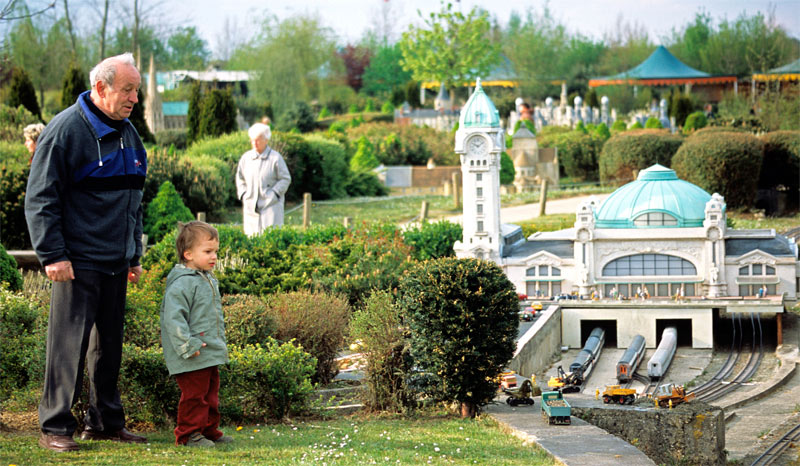
Examining the small-scale wonders at France Miniature
Laid out on a piece of land shaped like the map of France, this miniature landscape is crisscrossed by rivers, and train tracks with engines whizzing over bridges and into tunnels. An outdoor theme park, it features scale models of major French landmarks and monuments. Look out for the Alps; the Autoroute de Soleil, which runs south to the Mediterranean; the amphitheatre at Arles; and St-Tropez with film star yachts bobbing in the bay. Feel like a giant beside a mini version of the famous Eiffel Tower. The Parisian monuments offer a different perspective on some very well-known buildings. All in all there are 116 models of the most fascinating places in France.
Kids’ Corner
In France Miniature look out for…
-
The Tignes Dam with a fresco of super-strong Hercules.
-
The Roman Amphitheatre at Arles. The real one was built 2,000 years ago and is still in use.
-
The towering arches of the Pont du Gard. The Roman aqueduct brought gallons of water every day to the beautiful ivory coloured city of Nïmes.
-
The fortified city of Carcassonne with its 52 towers.
-
Mont St-Michel. The abbey sits on an island in the sea.
5. Parc Astérix
Greedy Gauls, rotten Romans and roller coasters
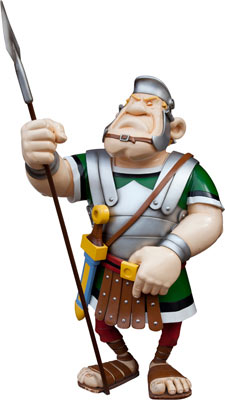
Figure of a Roman in Parc Astérix
By 50 BC, Julius Caesar had conquered most of Gaul, now France, except for a tiny unnamed village situated in the province of Armorica. Parc Astérix is centred on this legendary village, which Astérix the Gaul and his sidekick Obélix famously defended from the Roman invaders. The park, which has lots of charm and was approved by Astérix’s creator, Albert Uderzo, has exhilarating rides and, of course, plenty of colourful characters to meet and greet.
Key Features
1. Menhir Express Get wet on this spectacular water ride while hurtling down the 13-m (43-ft) slide inside one of Obélix’s standing stones.
2. Trace du Hourra Shoot along a bobsleigh. Run, slide, glide, swirl and shout hurray while plunging down.
3. Goudurix Twirl upside-down seven times at a speed of 75 km (47 miles) per hour on this thrilling roller coaster ride.
4. Dancing dolphins Watch these lively creatures in a superb magical show that will enchant kids.
5. Transdémonium Step inside the dragon’s mouth and into the medieval castle. Ride past the skeletons, monsters and phantoms on this ghost train.
6. Oxygénarium Take a deep breath before plunging 195 m (640 ft) on this giant water slide.
7. Tonnerre de Zeus Ride the biggest wooden roller coaster in Europe, which whizzes along at 80 km (50 miles) per hour to the summit of Mount Olympus.

Left Goudurix roller coaster Middle Dancing dolphins Right Oxygénarium
Kids’ Corner
Test your knowledge…
-
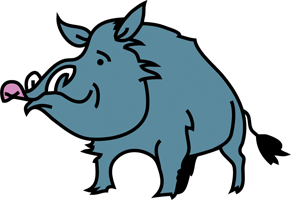
What is Obélix’s favourite food?
-
Who invents a potion to make it rain?
-
Name the supreme chief of the Britons?
-
What sort of dog is Dogmatix?
Gauls and asteroids
In Greek, Astérix means little star. The first French satellite, launched in 1965, was named Astérix 1. There is also an asteroid named after the intrepid Gaul, 29401 Astérix.
The real Astérix
In 52 BC, Gaulish warrior chief Vercingetorix united the Gauls and led a revolt against the Romans. He was defeated at the Battle of Alésia, which took place in the village of Alise Ste-Reine in Burgundy. He was held prisoner for five years before being paraded through the streets of Rome by the triumphant Caesar and then executed. There is a huge statue of him on the hilltop where he fought till the end, and a metro station in Paris is named after the battle.
6. Auvers-sur-Oise
An Impressionist day out
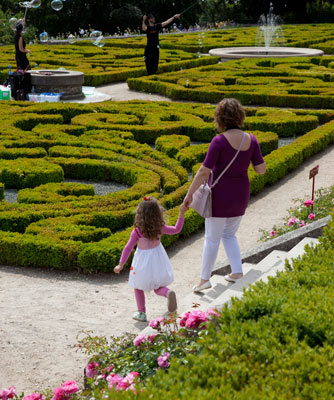
Well-manicured garden at the Château d’Auvers
Some of the most famous painters of the late 19th and early 20th century were drawn to the beautiful views and river walks in and around the picturesque village of Auvers-sur-Oise. Kids will love the Château d’Auvers, an interesting multimedia museum specially designed to introduce children to the Impressionists and the city that inspired them. In 1890, famous Dutch painter Vincent van Gogh spent the last two months of his life at Auvers. Penniless and exhausted, he worked day and night, frantically painting 70 paintings in 70 days, working outside in all kinds of weather. He died in room No. 5 at the Auberge Ravoux after shooting himself in the stomach. After his death, the room was never let out again.
Kids’ Corner
Things to do…
1. Bring a sketch book and crayons to draw pictures of Auvers-sur-Oise. Send them home to friends and family.
2. Spot the town crier of Auvers-sur-Oise on Sunday during term time at noon in the Place de la Marie. Perhaps pay him to €1 to announce a message? Drop messages in the box at Sous le Porche café.
An unhappy customer
Vincent van Gogh’s biggest ambition was to be a portrait painter. He painted three pictures of the daughter of the innkeeper at Auvers-sur-Oise, Adeline Ravoux, but neither she nor her parents were impressed. In 1905, her father sold the pictures for just 40 francs. The present owner paid a whopping €10 million for one of the portraits.
7. Abbaye de Royaumont
Monks, mills and forests
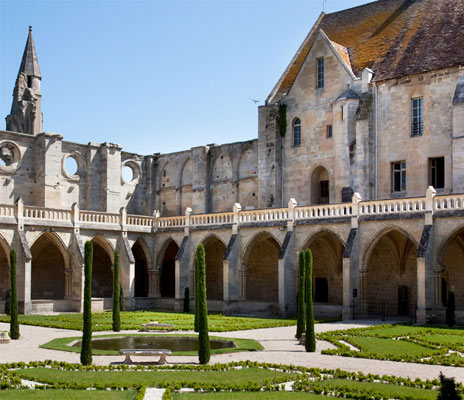
Beautiful cloister garden of the Abbaye de Royaumont
Surrounded by wetlands and beautiful forests, the medieval Abbaye de Royaumont is a tranquil place with avenues of chestnut trees and a garden of medicinal plants. Centred a magnificent cloister, it was built in 1228 by King Louis IX, and was one of his favourite places. Until the Revolution, it remained one of the most important Cistercian monasteries in France. In 1791 it was converted into a cotton mill and the church was destroyed. The giant bell in the middle of the courtyard is all that remains. The restored abbey is now a cultural centre.
Kids’ Corner
Things to do…
Play Astérix and Obélix near the Neolithic tomb, the Pierre Turquaise, in the Forêt de Carnelle, south of the Lac Bleu car park.
8. Musée de l’Air et de l’Espace
Up, up in the air
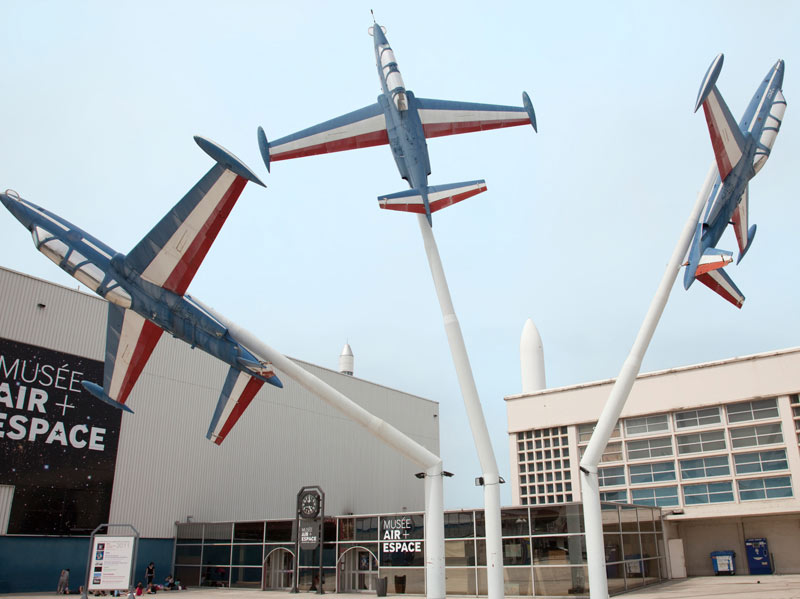
Aircraft models outside the Musée de l’Air et de l’Espace
Air travel began in France when the Montgolfier brothers invented the hot-air balloon in 1783. The air and space museum is located in one corner of the terminal of the Le Bourget, which is the oldest airport in Paris. Begun in 1919, the museum collection is one of the oldest of its kind in the world, although it was only moved to its present site in 1975. Discover how Louis Bleriot won £15,000 flying across the Channel, climb aboard a World War II bomber and get up close to a Concorde. Look out for the only remaining piece of the Oiseau Blanc, the White Bird, which took off from Le Bourget in 1927 to attempt a Transatlantic crossing, but disappeared over the Atlantic. The museum shop has a wide selection of models.
Kids’ Corner
Things to do…
Read The Little Prince, a classic French children’s story by one of France’s most famous pilots, Antoine de St-Exupéry.
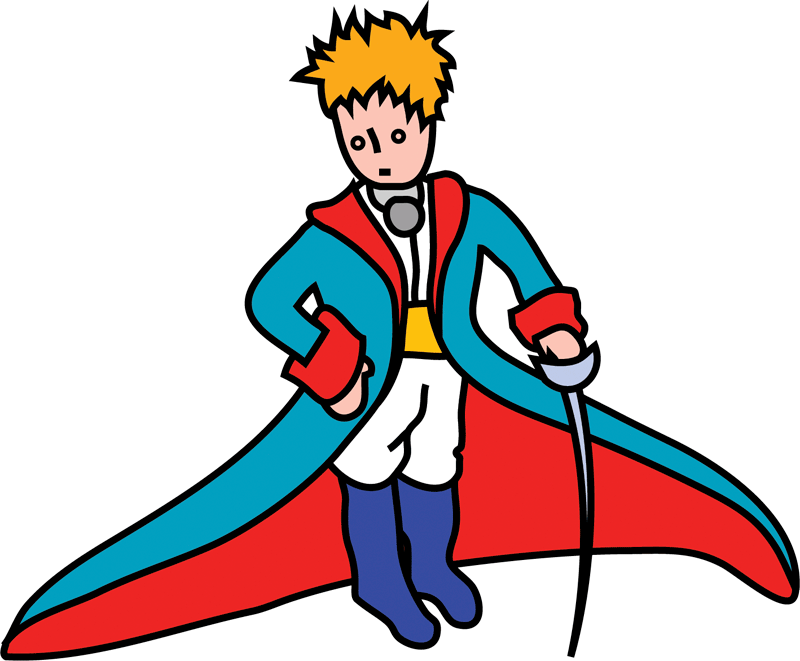
Across the skies
In 1927, Charles Lindbergh landed at Le Bourget airport in Paris. He was the first daredevil to fly across the Atlantic alone.
9. Disneyland® Paris
Mickey’s kingdom
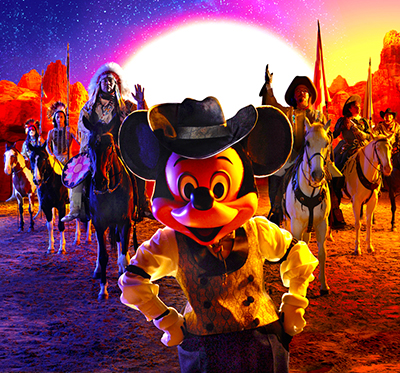
Mickey in Buffalo Bill’s Wild West show, Disney® Village
There is hardly a kid on the planet who would turn down a trip to Disneyland, so it is hardly surprising that Disneyland® Paris is the most visited theme park in Europe. In fact it comprises two theme parks – Disneyland® and Walt Disney Studios®. Here, children can meet their favourite cartoon characters and take a spin on some of the best rides on the continent. In addition, there is the Disney® Village, which has restaurants, shops and the Buffalo Bill Wild West Show. The main Disneyland® Park is divided into five different lands, linked by the 19th-century-style shopping street, Main Street, USA®.
Key Features
1. Main Street, USA® Based on Disney’s home town of Marceline, Missouri, this fantasy land is full of shops and restaurants. The magical Disney parade takes place here every afternoon, making it a good place to finish the day.
2. Disneyland Railroad Walt Disney was a great train enthusiast and had his own miniature steam train in his garden. The railroad runs along the perimeter of the park and stops in Main Street, USA®; Frontierland®; Fantasyland® and Discoveryland®.
3. Adventureland® Enjoy the wild rides and exciting animatronics, be Peter Pan and battle the pirates here. Take a perilous jungle ride with Indiana Jones, then play Swiss Family Robinson up in the trees.
4. Frontierland® Visit the haunted house, ride on a paddle steamer and get the adrenalin going on the thrilling roller coaster, Big Thunder Mountain, in this homage to America’s Wild West. Phantom Manor is a ghost ride with excellent special effects.
5. Sleeping Beauty’s Castle Step into the pink fairytale castle, which features a dragon in its dungeon and stained-glass windows showing popular characters.
6. Discoveryland® With a futuristic theme, this is the place to set off on an intergalactic adventure. It includes Buzz Lightyear Laser Blast®, an interactive ride, and is the most interesting part of the park for older kids.
7. Fantasyland® Make this the first stop–it’s where the true Disney magic is found. All the classic characters are here to be greeted. It is the perfect part of the park for younger kids, with fairytales such as Snow White and the Seven Dwarfs being brought to life.

Left Frontierland Middle Sleeping Beauty’s Castle Right Fontaine Médicis
Kids’ Corner
Look out for…
-
King Arthur’s Sword in the Stone in Fantasyland®.
-
Captain Hook’s pirate ship in Adventureland®.
-
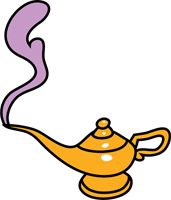
Aladdin’s lamp in Adventureland®.
-
Alice’s amazing maze, the Curious Labyrinth, in Fantasyland®.
Monsieur Disney
Walter Disney was descended from a Norman knight, Robert d’Isigny, who invaded England with William the Conqueror in 1066. In 1918, during World War I, Disney came to France to drive an ambulance.
Happy birthday mickey!
Mickey Mouse’s birthday is officially 18 November 1928, even though he first put in an appearance in May 1928. He was originally voiced by Walt Disney himself.
How well do you know your cartoons?
-
Which was Disney’s first full-length feature film?
-
What is the name of Disney’s flying elephant?
-
What poisoned fruit does the Queen give Snow White?
-
What animal does Pinocchio turn into?
-
What is the Little Mermaid’s real name?
-
Which movie features Captain Jack Sparrow?
10. Provins
Ramparts, eagles and medieval warfare
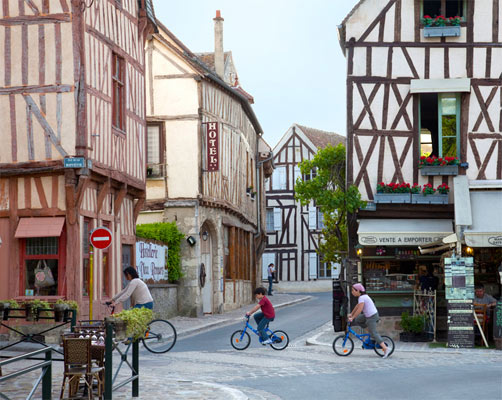
Children riding bikes in the delightful town of Provins
High on a plateau, the medieval capital of the Counts of Champagne dominates the pretty surrounding countryside and is often used as a film set for medieval Paris. Plunge into a world of knights and princesses, exploring the ramparts that still surround the old town and the mysterious underground tunnels. Be Rapunzel in the Tour César, a huge keep that was occupied by the English during the Hundred Years’ War. In summer there are spectacular horse shows and displays of medieval warfare. Do not miss the fascinating birds of prey in action on the city walls.
Kids’ Corner
Things to do…
1. Eat some cheese. France’s most famous soft cheese, Brie, comes from this part of France.
2. Battle with wooden swords along the ramparts at Provins or in the courtyard at Blandy-les-Tours.
11. Vaux-le-Vicomte
A château fit for Puss in Boots
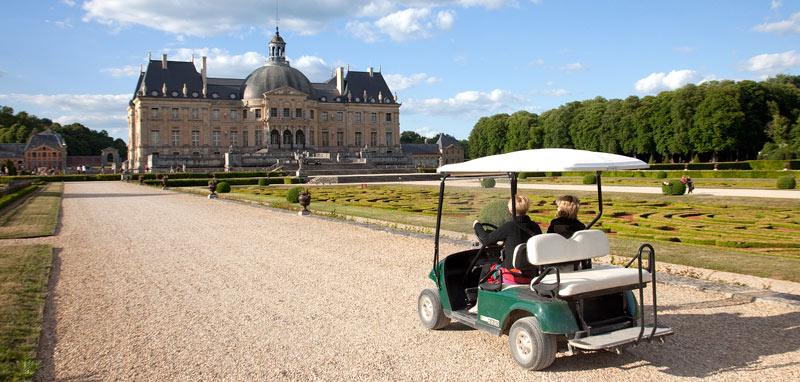
Old and young enjoy Vaux-le-Vicomte, seen across the André Le Nôtre gardens
Vaux-le-Vicomte is so beautiful that when Louis XIV saw it in 1661, he had a fit of jealousy. Nicolas Fouquet, the king’s Lord High Treasurer, had hired the most talented artists of his time to create this storybook château, and it was so opulent that Louis was convinced Fouquet had stolen the money from his treasury to build it. Louis condemned Fouquet to life imprisonment and stole his architect, Le Vau, to design his own new home at
Versailles. Vaux-le-Vicomte is a great place to visit with children. There are plenty of things to do in addition to special events organized for kids. It is at its most enchanting on summer evenings, when it is lit by candlelight, and at Christmas.
Kids’ Corner
Things to do…
Dress up in a fancy dress for one of the special children’s tours at the fairy-tale Château Vaux-le-Vicomte.
The wicked king
Louis XIV invited Nicolas Fouquet to join him in the city of Nantes three weeks after his visit to Vaux-le-Vicomte. He flattered him and made him feel special, but he had already made plans for Fouquest’s arrest – by a musketeer called d’Artagnan.
A hundred years of war
For 116 years, from 1337 to 1453, the Valois Kings of France and the Plantagenet Kings of England battled it out in a series of conflicts, each one hoping to take control of the French throne. It was a difficult time to live in France for ordinary people. There were epidemics, famines and marauding armies and two out of every three people in the country died. The arrival of the longbow brought an end to knights on horseback and modernized the way wars were fought. In the end the English were driven out of France but held on to the port of Calais, and for the first time people in England and France began to think of themselves as citizens of separate countries.
12. Château de Blandy-les-Tours
Tantalizing towers and commanding views
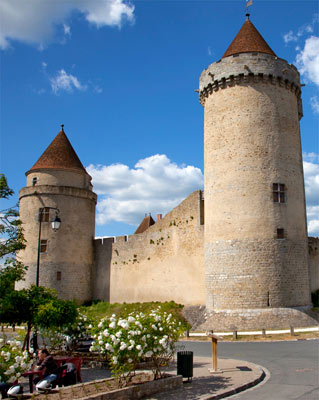
Towers of the Château de Blandy-les-Tours
The imposing Château de Blandy-les-Tours, located in the heart of the peaceful medieval village of the same name, looks as if it has jumped out of a storybook. This fortified castle was built by one of the knights who fought with Philippe Auguste at the Battle of Bouvines in 1214, when the English were badly defeated.
Most sections of the castle were rebuilt during the Hundred Years’ War, when it was on the front line. Climb up onto the ramparts and admire the views from the towers.
13. Fontainebleau
Tranquil forests and formal gardens
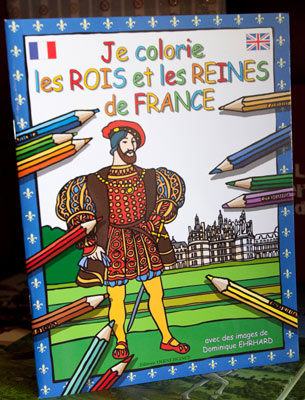
Colouring book in the château shop
The royal château at Fontainebleau was little more than a hunting lodge when, in the early 16th century, it was transformed into a Renaissance palace by François I, who discovered this new style while campaigning in Italy. Later kings, queens and mistresses have left their mark too and it was one of Napoleon’s favourite residences. Much quieter and more intimate than Versailles, it is surrounded by beautiful gardens and a fairytale forest with pretty villages and winding paths.
Key Features
1. Jardin de Diane This garden features a bronze fountain of goddess Diana as huntress.
2. Throne room Napoleon’s grandiose throne room is decorated with golden eagles and bees, both of which were the symbols of his power.
4. Galerie François I François I was so proud of this gilded gallery that he was the only person allowed to carry the key.
5. Entrance–Cour d’Honneur
6. Escalier du Fer-à-Cheval The famous horseshoe-shaped staircase, designed by Jean Androuet du Cerceau, dates from the reign of Louis XIII and was based on a Renaissance model.
8. Chapel Louis XV was married to the Polish princess Marie Leczinska here.
• Grand Canal Henri IV commissioned a 1,200-m (3,937-ft) long canal to run through the wooded park.

Left Galerie François I Middle Escalier du Fer-à-Cheval Right Grand Canal
Kids’ Corner
Look out for…
-
The royal initials M and H represent King Henri IV and his queen, Marie de Medici. What do the initials MA and N stand for?
-
François I was a keen reader and demanded a copy of every book that was published in France. Can you guess how many books are housed in his library?
-
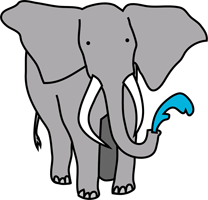
In the Galerie François I is an elephant, painted by Rosso Fiorentino, that symbolizes the king – how can you tell?
-
Spot a bronze fountain in the Jardin de Diane. Which Roman goddess is featured here?
Canine discovery
The town of Fontainebleau and the palace are named after a dog called Bliaud, who discovered a spring here that became known as the “Fontaine de Bliaud”. The town and palace hence came to be called Fontainebleau.
A royal birth
Before the birth of Louis XIII, his mother Marie de Medici’s bed was moved into a larger room, now the Salon Louis XIII, to provide space for the huge crowd that gathered to witness that the future king was born alive and was not an imposter.
